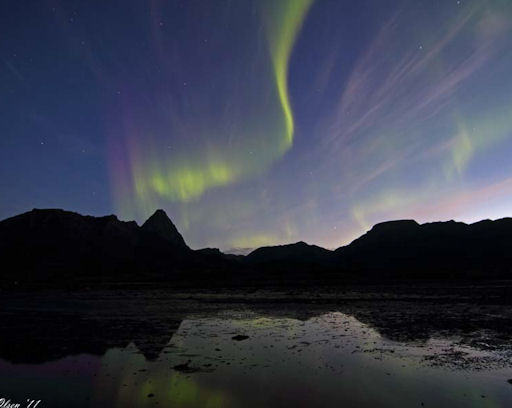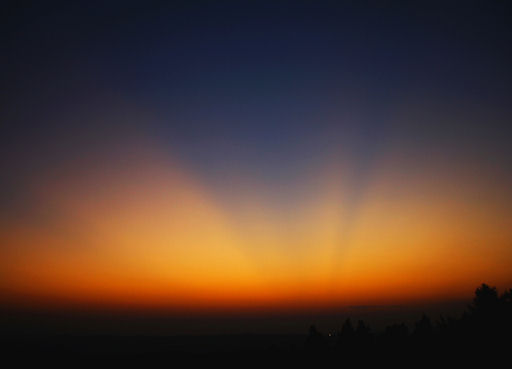Are we alone? Your iPhone has the answer. Download the all-new Drake Equation app to calculate the population of the Milky Way. | | |
SUNSPOT BREAKTHROUGH: A new breakthrough in sunspot detection could provide days of extra early warning for strong solar storms. Get the full story from Science@NASA.
AURORA OUTBURST: Sometimes it pays to wait. "I watched the sky for three hours last night (Aug. 24-25) hoping to see some auroras," says Frank Olsen of Stø, Norway. "I was about to give up when the sky erupted in color." The 10-minute outburst was bright enough to shine through twilight and lunar glare:

"Boy was I happy I hadn't gone home," says Olsen.
The display was caused by a thin but surprisingly effective solar wind stream which has been gently buffeting Earth's magnetic field for the past two days. NOAA forecasters estimate a 15% chance of continued geomagnetic activity tonight; high-latitude sky watchers should remain (patiently) alert for auroras. Aurora alerts: text, voice.
more images: from Bjarki Mikkelsen of Jokkmokk Porjus, Lapland, Sweden; from Sean M. Scully of Akureyri, Iceland
August 2011 Aurora Gallery
[previous Augusts: 2010, 2009, 2008, 2007, 2006, 2005, 2004, 2003, 2002]
VOLCANIC SUNSETS: Sky watchers in Europe should be alert for volcanic sunsets. "For the past week, we've seen unusual twilight rays probably caused by high-attitude aerosols from Nabro, a volcano which erupted in Eritrea on June 13th," reports Petr Horalek from the Ondřejov Observatory of the Astronomical Institute of the Academy of Sciences of the Czech Republic. This is how the sky looked on Aug. 23rd:

"Around 20 minutes after sunset these significant crepuscular rays appeared like shining fingers in the western sky," he describes. "The rays were so strong, I could see them almost directly overhead; and in the south, they stretched across the horizon like great red and purple stripes."
Purple is one of the telltale colors of a volcanic sunset. Fine volcanic aerosols in the stratosphere scatter blue light which, when mixed with ordinary sunset red, produces a violet hue. Another set of photos taken by Martin Popek in the Czech city of Nýdek highlights the purple signature.
more images: from Monika Landy-Gyebnar of Veszprem, Hungary
2011 Noctilucent Cloud Gallery
[previous years: 2003, 2004, 2005, 2006, 2007, 2008, 2009]

